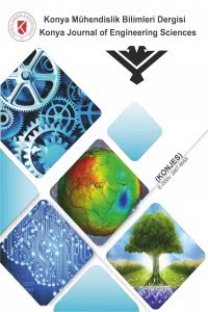Lületaşı işletme atıklarının kurşun gideriminde kullanılabilirliğinin incelenmesi
An investigation of lead removal using lületaşı process wastes
___
- Ağım, B.A., 2003, Atıksulardan Kurşun Gideriminde Sepiyolitin Kullanılamlabilirliğinin İncelenmesi, Gebze Yüksek Teknoloji Enstitüsü, Mühendislik ve Fen Bilimleri Enstitüsü, Çevre Mühendisliği Anabilim Dalı, Yüksek Lisans Tezi.
- Bağ, H., Lale, M. and Türker, A.R., 1998, Determination of Iron and Nickel by Flame Atomic Absorbtion Spectrophotometry after Preconcentration on Saccharomyces cerevisiae Immobilized Sepiolite, Talanta, 47, 689-696.
- Balci, S. and Dinçel, Y., 2002, Ammonium Ion Adsorption with Sepiolite: Use of Transient Uptake Method, Chem Eng Process, 41, 79- 85.
- Brigatti et al 2000 Brigatti, M.F. Lugli, C. And Poppi, L., 2000, Kinetics of Heavy Metal Removal and Recovery in Sepiolite, Appl Clay Sci, 16, 45-57.
- Devlet Planlama Teşkilatı, DPT, 2001, Madencilik Özel İhtisas Komisyonu Endüstriyel Hammaddeler Alt Komisyonu, Lületaşı Çalışma Grubu Raporu, Ankara.
- Harrison R.M., 1996, Pollution, Causes, Effects and Control, 3rd Edition, Royal Society of Chemistry, 55-71.
- Helios R.E., 1985, Sorption of Ni, Zn and Cd on Sepiolite, Clay Miner, 20, 525-7.
- Ho, Y.S. and McKay, G. 1999, Process Biochem. 34,451-465.
- http://europa.eu.int/comm/enviroxment/water/water-drink/index_en.html
- Kara, M., Yuzer, H., Sabah, E. And Celik, M.S., 2003, Adsorption of Cobalt from Aqueous Solutions onto Sepiolite, Water Research, 37, 224-232.
- Lagergren, S., 1898, Handlingar, 24,1-39.
- Nriagu, J.O., 1989, Control and Fate of Atmosferic Trace Metals, Kluwer Academic Publishers, Dordrecht.
- Peters, R.W, 1996, Industrial Wastewater Heavy Metal Removal, CRC Press.
- Rytwo, G., Tropp, D. and Serban, C., 2002, Adsorption of Diquat, Paraquat and Methyl Green on Sepiolite: Experimental Results and Model Calculations, Appl Clay Sci, 20, 273-282
- Seader J.D. and Herley, 1998, Separation "Process Principles, John Wiley & Sons, New York.
- Su Kirliliği Kontrolü Yönetmeliği (SSKY), 1998,19919 sayılı Resmi Gazete.
- TS 266, İçme ve Kullanma Suları; İçilebilir Suların Fiziksel ve Kimyasal Özellikleri, 1997.TÜRK STANDARTLARI ENSTİTÜSÜ,
- Türk Tabibler Birliği (TTB), İşyeri Hekimliği Ders Notları, 2001, Türk Tabibler Birliği Yayını, Ankara, 79-86.
- Vemet J. P., 1991, Heavy Metals in the Environment, Elsevier, Amsterdam.
- Yiacoumi S. and Chi Tien, 1995, Kinetics of Metal Ion Adsorption from Aqueous Solutions, Models, Algorithms and Applications, Kluwer Academic Publishers, Boston.
- World Health Organisation (WHO), 1993, Guidelines for Drinking Water, Geneva.
- ISSN: 1300-5200
- Yayın Aralığı: 4
- Başlangıç: 2018
- Yayıncı: -
Lületaşı işletme atıklarının kurşun gideriminde kullanılabilirliğinin incelenmesi
NİHAL BEKTAŞ, MEHMET SALİM ÖNCEL
Kanat Burak BOZDOĞAN, ALPER SEZER, Pelin AKLIK
Edirne Kaleiçi geleneksel konutlarının plan ve cephe özellikleri
GPS efemeris bilgisinin göreli konumlamada koordinatlara ve baz bileşenlerine etkisi
Deprem yükü etkisi altında kalan çatı kalkan duvarlarının davranışı
MEHMET KAMANLI, FATİH SÜLEYMAN BALIK
Orta Anadolu Kapalı Havzasının yıllık ortalama akımlarının stokastik modellemesi
İnsan mandibulasında sonlu elemanlar metodu kullanılarak gerilme analizi yapılması
ABDULKERİM İLGÜN, Hasan Hüsnü KORKMAZ, Sıddık MALKOÇ, Faruk Ayhan BAŞÇİFTÇİ
Doğankuzu (Seydişehir) boksit ocağında süreksizliklerin ve kaya kütlesinin incelenmesi
